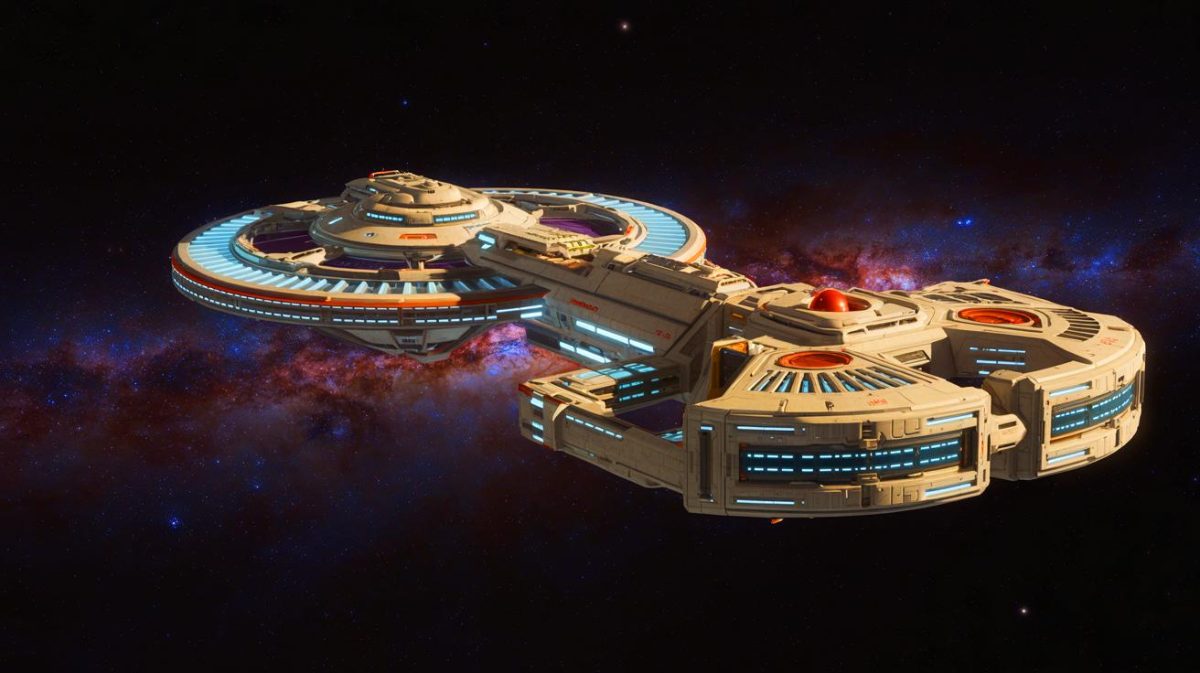| IN A NUTSHELL |
|
The recent announcement of the winners of Project Hyperion’s design competition marks a significant milestone in the quest for interstellar travel. This international initiative, spearheaded by the Initiative for Interstellar Studies (i4is), invited architects, engineers, and social scientists to propose designs for a “Generation Ship.” These worldships aim to carry humans to distant stars over centuries-long journeys. The competition underscores the growing interest in exploring the feasibility of human settlement beyond our solar system, fostering innovation that blends current technologies with futuristic concepts.
Generation Ships: A Vision for Interstellar Travel
Generation ships, or worldships, have long been a subject of fascination in science fiction and theoretical physics. These enormous vessels are designed to sustain human life for hundreds or even thousands of years as they journey to distant stars. While reaching our nearest stellar neighbor, Alpha Centauri, could take anywhere from 1,000 to 81,000 years with current technology, directed-energy propulsion offers a glimmer of hope for faster travel.
Proposals like Breakthrough Starshot and Project Dragonfly explore the potential of using laser-driven lightsails to propel small craft at a fraction of the speed of light. However, these methods remain largely theoretical and expensive. In contrast, generation ships emphasize creating self-sufficient environments that can sustain multiple generations. These ships would need to incorporate bioregenerative life support systems, grow food, recycle resources, and maintain social stability over extended periods.
Historical figures like Robert H. Goddard and Konstantin E. Tsiolkovsky were among the pioneers to conceptualize these ideas. Their early 20th-century writings envisioned ships powered by atomic energy and manned by crews in suspended animation. Over the decades, scientists and engineers have proposed various models, from nuclear pulse propulsion to fusion-powered designs, each contributing to the evolving narrative of interstellar travel.
The Winning Designs: Innovation Meets Feasibility
The Project Hyperion competition attracted submissions from interdisciplinary teams worldwide, each tasked with designing a ship that could maintain habitability for 1,000 ± 500 people over several centuries. The top three winners demonstrated innovative approaches to sustain life and ensure the well-being of generations on board.
In first place, the Chrysalis team from Italy presented a modular cylindrical structure designed to minimize the risks of micrometeoroid collisions. Their ship, measuring an impressive 63,430 yards in length, employs a Direct Fusion Drive propulsion system, aiming for a journey of approximately 400 years to reach Proxima b. The design features a rotating habitat to simulate Earth-like gravity and includes communal spaces, food production areas, and a striking “Cosmo Dome” for cosmic viewing.
The second-place WFP Extreme team from Poland focused on cultural and societal dimensions, incorporating advanced technologies such as radiation protection and a “taxi capsule” system. Their ship’s counterrotating rings provide simulated gravity, while interconnected neighborhoods promote cultural exchange and community building. This design was praised for its thoughtful integration of societal considerations, from clothing to spiritual spaces.
Systema Stellare Proximum: A Bold New Frontier
Securing third place, the Systema Stellare Proximum team proposed a starship with an asteroid-based design, employing biomimicry inspired by jellyfish. This innovative concept uses an asteroid shell for radiation shielding and features a pulsed plasma ion propulsion system. The ship’s modular habitat allows for expansion and is supported by a closed-loop life support system utilizing algae for waste conversion.
The use of an asteroid as a protective shield is a daring choice, offering a natural barrier against cosmic radiation and impacts. Inside, the ship fosters an environment akin to a self-sustaining ecosystem, with hydroponic systems for food production and water purification. This design also emphasizes storytelling, weaving technical and cultural elements into a compelling narrative of human exploration and survival.
The combination of technical innovation and cultural foresight sets Systema Stellare Proximum apart, highlighting the importance of shared values and community resilience in long-term space habitation.
Looking to the Future of Interstellar Exploration
The Project Hyperion competition not only celebrates innovative design but also highlights the challenges of interstellar travel. The concepts presented by the winners illustrate the potential for human ingenuity to overcome the formidable obstacles of distance, time, and resource scarcity. While practical implementation remains a distant goal, these designs pave the way for future research and development.
As humanity continues to push the boundaries of space exploration, the ideas generated by competitions like Project Hyperion will be instrumental in guiding the development of technologies and systems necessary for long-duration space missions. The integration of architecture, engineering, and social sciences in these designs reflects a holistic approach to the challenges of living beyond Earth.
What lessons can be learned from these visionary projects to address the immediate challenges of space travel and ensure the sustainability of human life on future interstellar voyages?
Did you like it? 4.4/5 (25)








Wow, a 400-year journey! I hope they pack enough snacks. 🍕
How do they deal with the psychological effects of living in space for generations?
Is it really feasible to sustain a society in space for hundreds of years?
Are these designs just theoretical, or is there a plan to build them?
The concept of using an asteroid as a shield is truly fascinating! 🚀
How do they plan to handle the cultural integration on these ships?
Thank you for the article, it’s exciting to see such innovative ideas! 😊